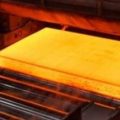The industrial company Rio Tinto has partnered with the Canadian government to invest 737 million Canadian dollars over the next eight years. The multinational’s objective is none other than to decarbonize the Sorel-Tracy Quebec iron and titanium facility (RTFT). During this time Rio Tinto will seek to make it a center of excellence for the processing of critical minerals.
Precisely, the multinational is working to reduce greenhouse gas emissions generated by the products it produces; from titanium dioxide, steel and metal powder. In addition, Rio Tinto will promote initiatives to diversify RTFT’s product portfolio, consolidating its leadership as a North American supplier when it comes to critical ore.
That’s why the Canadian government has decided that it will invest up to $222 million of U.S. capital over the next eight years for the State Strategic Innovation Fund (SIF) to support large-scale transformation and collaboration projects that will help Canada thrive in the global knowledge-based economy.
For Jakob Stausholm, CEO of Rio Tinto, this is a firm commitment. “We are committed to participating in the decarbonization of our operations and to continuing to explore new ways for production. We are pleased to work together with the Canadian Government to position RTFT for the future and precious metals,” he remarked.
The BlueSmelting project is subject to ilmenite reduction that could generate 95% less greenhouse gas emissions than the current RTFT process, enabling the production of high quality titanium dioxide, steel and powder metals with a significantly higher carbon footprint.
In addition, a demonstration plant is being built at RTFT’s Sorel Tracy Metallurgical Complex to test and validate this technology developed by scientists at Rio Tinto’s Critical Minerals Technology Center. Capable of processing up to 40,000 t ilmenite ore per year, the plant is expected to be completed in the first half of 2023.
After becoming the largest scandium producer in North America, Rio Tinto plans to quadruple its production capacity to 12 tons to make it more useful by utilizing the rocks it has in this geographic area.










